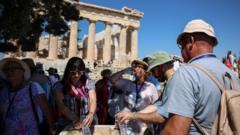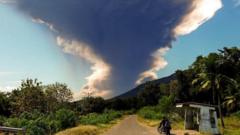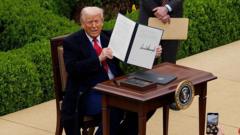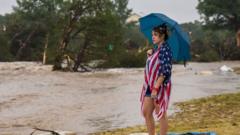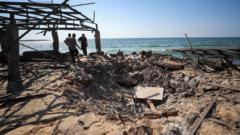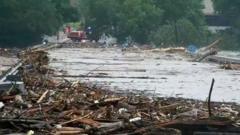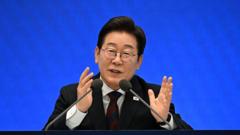As South Korea deals with a severe wildfire crisis impacting its southeastern region, at least 24 people have lost their lives. The fires, fueled by strong winds and dry conditions, have led to widespread evacuations and significant damage to cultural landmarks, reshaping the nation's record on wildfires.
Catastrophic Wildfires Claim Lives and Cultural Heritage in South Korea
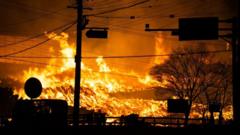
Catastrophic Wildfires Claim Lives and Cultural Heritage in South Korea
South Korea faces its deadliest wildfire crisis in history, with 24 reported fatalities, including significant cultural loss as fires engulf a historic temple.
At least 24 individuals have tragically died as wildfires continue to devastate South Korea's southeastern region, marking what officials describe as the worst wildfire crisis in the nation's history. Most of the deceased are elderly, aged in their 60s and 70s, with around 26 others reported injured and 12 in critical condition. Approximately 23,000 residents have been evacuated as the catastrophic fires represent an unprecedented challenge for emergency services.
The prime minister's office called the situation "rewriting the record books" regarding wildfires, with the flames consuming a historic 1,300-year-old temple in Uiseong city. Cultural relics had to be transported for safekeeping as the fires spread alarmingly from Sancheong county to surrounding areas, exacerbated by dry winds.
The wildfires ignited last Friday and quickly escalated, prompting officials to raise the national crisis level for fire response. On the most recent Tuesday, a firefighting helicopter tragically crashed in the Uiseong mountains, resulting in the pilot's death, leading to investigations into the cause.
A total of 5,000 military personnel and thousands of firefighters have been engaged in firefighting efforts, supported by helicopters from the U.S. military stationed in Korea. Wildfires, while not common in South Korea, have seen a significant uptick this year, with over 244 incidents recorded, 2.4 times more than the same period last year. Approximately 17,000 hectares (42,000 acres) of forest have suffered destruction, ranking these fires as the third-largest in terms of area.
Residents recount their experiences with devastating losses; one individual from Andong described their home as reduced to ruins. A monk from Gounsa temple expressed profound sadness over the destruction, vowing to restore the temple's significance. Local drivers witnessed the dramatic devastation, reflecting on the apocalyptic scenes unfolding as flames consumed the landscape.
Acting president Han Duck-soo noted that unfavorable weather conditions hindered firefighting efforts, expressing hope for rain to mitigate the fires. However, forecasts predicted minimal rainfall. In response, the South Korean government pledged to strengthen regulations to address illegal burning and individual recklessness, identified as contributing factors to the ongoing wildfire situation.


